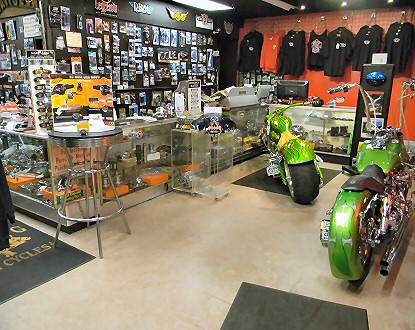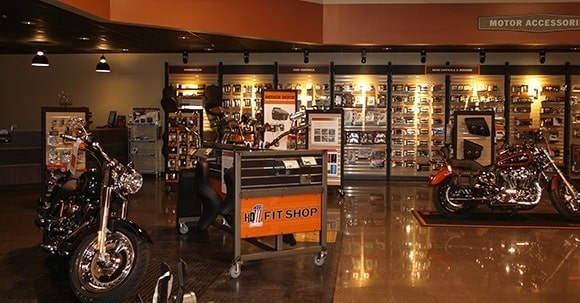Must-Have Motocross Gear: Boost Your Riding Experience Today
Must-Have Motocross Gear: Boost Your Riding Experience Today
Blog Article
Recognizing the Necessary Components of a Motorbike: A Comprehensive Guide for Fanatics
For bike fanatics looking to raise their riding experience and guarantee their bikes run smoothly, comprehending the crucial parts of a motorcycle is paramount. Each aspect, from the engine's intricate functions to the essential function of the braking systems, not only influences performance but additionally safety and comfort.
Engine Parts

The camshaft plays an important role in regulating the timing of the engine's valves, making sure the specific opening and closing necessary for reliable gas and air intake, as well as exhaust expulsion. This timing is important to keeping optimal engine performance and efficiency. In addition, the carburetor or fuel shot system, relying on the motorcycle version, is in charge of mixing air with fuel in the proper proportion for combustion.
The cooling system, either air or liquid-based, functions to maintain the engine's temperature level within operational restrictions, avoiding getting too hot and making sure durability - mx gear nz. Each part, meticulously developed and integrated, adds to the smooth operation of the engine, defining the motorcycle's power output and total performance
Transmission System
Integral to the motorcycle's performance, the transmission system ensures efficient power transfer from the engine to the wheels. This system comprises numerous critical parts, including the clutch, transmission, and last drive, each playing an important function in equating the engine's power right into movement. The clutch, commonly run by a hand bar, offers to engage and disengage the engine from the transmission, permitting for smooth equipment adjustments and regulated acceleration.
The transmission, frequently referred to as the transmission correct, contains a set of gears that motorcyclists can manually shift through to change the bike's rate and torque result. These gears are organized in a series that makes it possible for the motorcycle to speed up smoothly and preserve ideal engine efficiency across numerous speeds. The majority of motorcycles use a consecutive transmission, requiring the motorcyclist to move equipments in an established order.
Braking Devices
While recognizing the transmission system is vital to harnessing a motorbike's power, similarly vital is the ability to regulate and quit that power efficiently, which is where stopping systems enter into play. Brakes are important for security and efficiency, providing the biker with the necessary control to browse different terrains and problems. Typically, bikes include two sorts of stopping systems: disc brakes and drum brakes.
Disc brakes are more widespread in modern-day motorbikes due to their superior performance. They include a brake disc, caliper, and pads. When triggered, the caliper presses the brake pads against the spinning disc, transforming kinetic power into warm, thus reducing the wheel. This system provides far better warmth dissipation, constant performance, and boosted quiting power, specifically in wet conditions.
Conversely, drum brakes, though much less usual, are still discovered in some motorcycles. They function by pressing brake shoes versus the internal surface area of a drum connected to the wheel. While normally much less efficient in warmth dissipation and go to website stopping power, drum brakes are less complex and a lot more cost-effective.
Comprehending these braking systems' subtleties permits bikers to maintain their motorcycles effectively and value the design that makes certain safe and effective stopping.
Suspension and Guiding
Suspension and guiding systems are crucial components that considerably influence a bike's handling and trip convenience. The shock absorber, including forks at the front and shock absorbers at the back, absorbs roadway irregularities, enhancing security and her response control. Front forks, upside down or commonly telescopic, compress and rebound to mitigate impacts, while rear shock absorbers preserve tire contact with the roadway, vital for grip and security.
Steering, centered around the handlebars, attaches the rider to the motorcycle's directional control. The guiding head bearings ensure smooth operation, permitting exact maneuverability. Correct alignment and maintenance of these bearings are essential for predictable guiding reaction and reducing biker exhaustion.
The suspension's adjustability is one more vital element; preload, damping, and rebound settings allow modification to suit numerous riding conditions and styles. This adaptability is important for optimizing performance, whether navigating city streets or taking on sturdy routes. Technologies like electronic shock absorber use real-time adjustments, improving experience quality throughout varied terrains.

Electrical Systems
After making certain a smooth and regulated experience via efficient suspension and guiding systems, focus transforms to the electric systems, a pivotal aspect of contemporary motorcycles. These systems play a critical role not only in starting the engine however likewise in powering numerous parts that enhance the capability and safety and security of the motorcycle.
At the heart of a motorbike's electric system is the battery, which shops electric energy necessary for beginning the engine and powering supporting systems - motocross gear. The alternator or generator, paired with the rectifier-regulator, ensures the battery stays billed while the motorcycle is in operation, transforming mechanical power into electric energy and preserving voltage degrees
The ignition click here to read system, another important part, is accountable for stiring up the air-fuel blend in the engine's cylinders. Modern bikes commonly use a digital ignition system, supplying better performance and reliability compared to traditional systems.
Lights systems, including headlights, tail lights, and signs, are additionally essential, guaranteeing visibility and safety for the rider. Added digital parts such as sensors, control units, and presents add to sophisticated features like gas injection administration, anti-lock braking systems (ABDOMINAL MUSCLE), and electronic control panels, additionally boosting the riding experience.
Verdict
An extensive understanding of a motorcycle's essential parts, including the engine, transmission system, braking devices, suspension, guiding, and electric systems, is important for lovers intending to enhance performance, comfort, and security. Mastery of these aspects permits notified choices pertaining to upkeep and upgrades, eventually enhancing the riding experience. By incorporating this knowledge, cyclists can guarantee their bikes operate at peak effectiveness and integrity, thereby making the most of both pleasure and long life of their lorries.
For bike fanatics looking to raise their riding experience and ensure their bikes run efficiently, recognizing the crucial components of a motorcycle is paramount.Essential to the motorbike's performance, the transmission system makes certain efficient power transfer from the engine to the wheels.While recognizing the transmission system is vital to harnessing a motorcycle's power, equally essential is the capacity to control and quit that power successfully, which is where braking devices come into play. Normally, motorbikes feature two kinds of stopping systems: disc brakes and drum brakes.
A complete comprehension of a motorbike's necessary components, including the engine, transmission system, braking mechanisms, suspension, guiding, and electrical systems, is important for lovers aiming to enhance safety, convenience, and performance.
Report this page